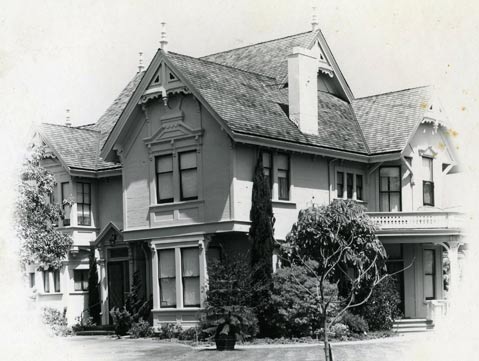S.B. Architecture
Victorian Styles Mix with Spanish Colonial Revival

Usually, when folks think about Santa Barbara architecture, they picture the red-tile roofs and white walls of the Spanish Colonial Revival style. Yet the city offers a much wider range of architectural looks, which include the numerous Victorian homes and buildings scattered throughout town. The two most common styles of Victorian architecture in Santa Barbara were probably Italianate and Queen Anne.
As more Americans arrived in Santa Barbara in the wake of the U.S. annexation of California in 1848, the adobe construction of earlier years slowly gave way to wood. Completion of Stearns Wharf in 1872, which eased the importation of lumber, quickened this transition. Newcomers from the east wanted their homes to be reminiscent of what they had left behind.
The variety of styles brought together under the rubric “Victorian” is named after Britain’s Queen Victoria, who reigned from 1837 to 1901. By the 1870s, Victorian architecture was catching on in Santa Barbara, mimicking developments in San Francisco, which, as the state’s largest city, often led the way as the arbiter of taste for Californians.
Italianate became popular in Santa Barbara thanks largely to one man, Peter Barber, the city’s first professional architect. He arrived here from San Francisco in 1869. A cabinetmaker, he was largely self-trained in architecture. By the time of his death in 1905, he had designed some 140 buildings in the area and, although he worked in other styles, much of his work was Italianate.
Reminiscent of Italian Renaissance architecture, buildings in this style have flat roofs, narrow doors and windows, a box-like appearance, and often have towers. Railings at the roof and/or the porch were common. This style continued in popularity well into the 1890s in Santa Barbara.
Among Barber’s creations were the Hunt-Stambach house at 821 Coronel Street, the house he designed for banker Mortimer Cook at 1407 Chapala Street in 1871, the John More house at 131 East Arrellaga Street, and the Lincoln house, now the Hotel Upham, at 1404 De la Vina Street. An elegant example of the style, not executed by Barber, is a dwelling at 805 Castillo Street.
When people think of Victorian architecture they more often than not picture the Queen Anne style. It was introduced to the U.S. at the 1876 Centennial Exposition in Philadelphia; it began to be popular in this area around the mid 1880s. The Queen Anne style was largely eclectic with an emphasis on vertical lines with steep gables, irregular elevations, corner towers, and arches. Fine examples of this style include the Charles Fernald mansion at 412 West Montecito Street and the Sherman house at 625 Chapala Street. The Edwards house at 1721 Santa Barbara Street and a home at 422 West De la Guerra Street were designed by Santa Barbara’s second major architect of the late 1800s, Thomas Nixon.
The Fernald home is an interesting case. The original house was a square, brick building, located at 422 Santa Barbara Street. This was almost completely obscured by a remodel begun in 1880 by Nixon. The family greatly enlarged the home, the roof was replaced and steeply pitched, and other details added to give the structure a Queen Anne look. Barber added Italianate touches in the early 1890s. The Santa Barbara Historical Museum now owns the home, is undertaking a large-scale renovation, and will soon open it once again for tours.
The next time you take a walk or drive through town, take a look around, for Santa Barbara houses any number of Victorian buildings. Our city offers much more than white walls and red tile roofs.



